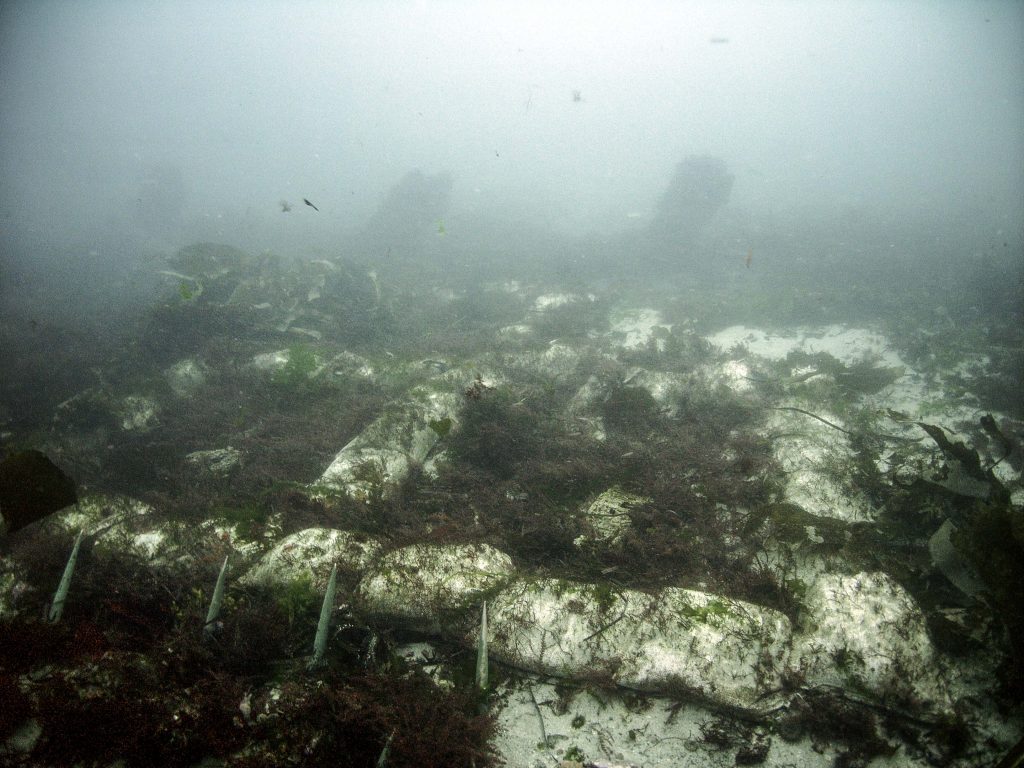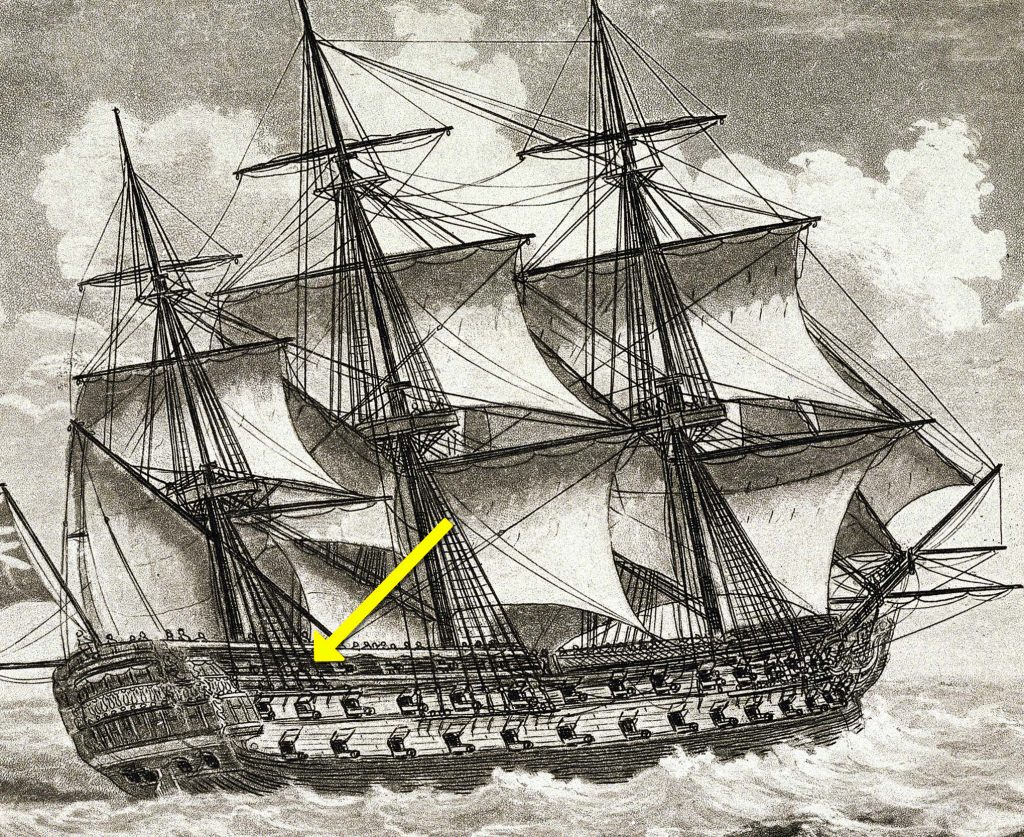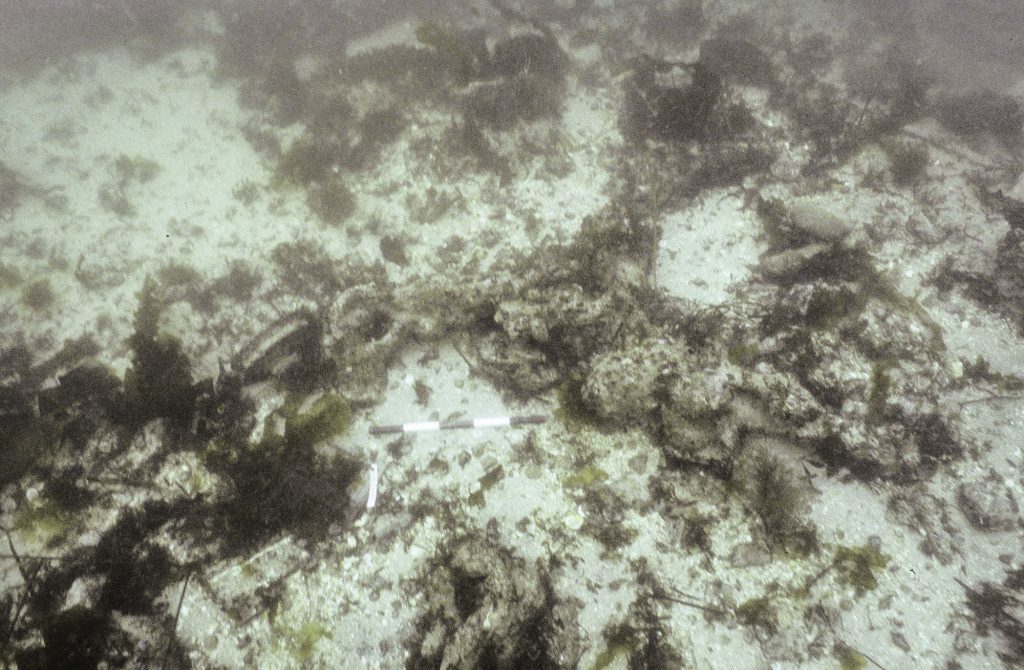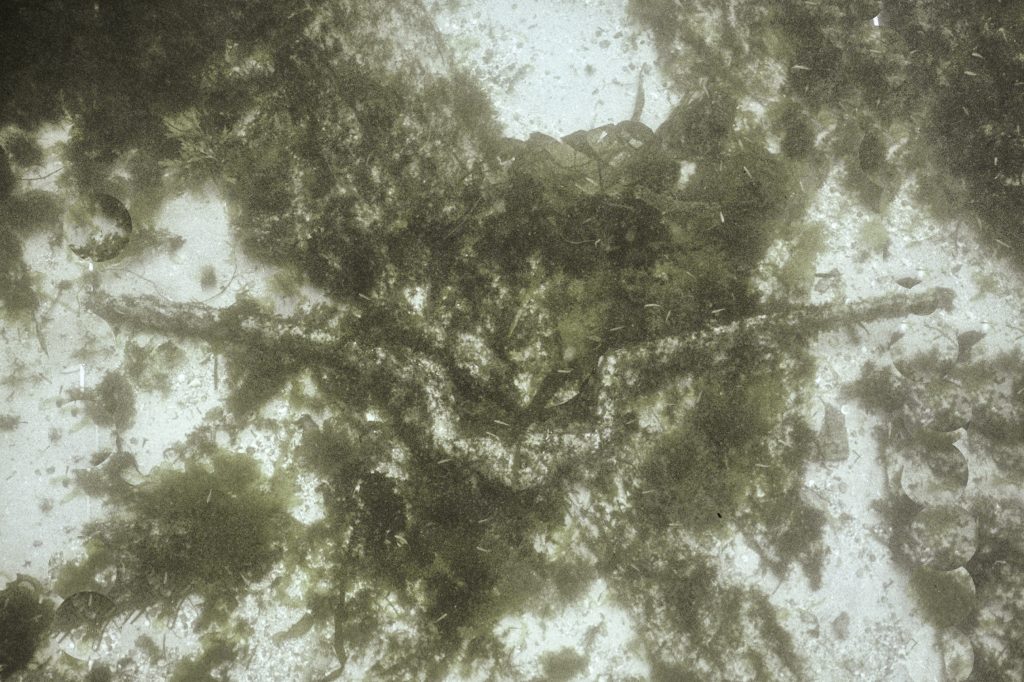1. Upper gun-deck cannon
This is one of the 18-pound upper gun-deck cannons. There are a row of five cannons all standing upright on the seabed with their muzzles buried in the sand. They were tipped into this position when the Colossus rolled onto her port side on the seabed and the guns dropped through the gun ports.

Find out more about this part of the wreck at Dive Station 3.
2. Sandbags
The odd looking rectangles showing here are not actually part of the wreck. They are rows of sandbags which were used to hold geotextile sheets in place. These were placed in position in 2013 to stabilise the sediments on this part of the wreck.

This is how they looked in June 2013 when the geotextile (Terram 4000) was installed.

This is how they looked three months later with seaweed growing on them. The sandbags are now almost invisible as they have been completely colonised by various seaweeds. Note the copper hull fastening bolts visible in the foreground and three of the five upstanding cannons just visible in the background.
3. Mizzen Chains
These corroded iron objects standing on the seabed are the remains of the mizzen chains. The mizzen is the rear-most of the three masts on HMS Colossus. The chains were iron fastenings which secured the shrouds to the outside of the vessel (the shrouds were large ropes which supported the masts). The arrow on the illustration below indicates where these were on the ship.


This is what the mizzen chains look like on the seabed now (the scale bar is 0.5m long).
4. Upper gun-deck cannon lying flat on the seabed

As well as the five upstanding cannons there is also one which has fallen over and now lies partly buried in the seabed.
Find out more about this part of the wreck at Dive Station 5.
5. Rudder Gudgeon

This large piece of iron is almost 11 feet (3.35m) long. It is a rudder gudgeon and was used to fasten the ship’s rudder to the hull. The hole in the centre is where a rudder pintle pivoted.

Find out more about this part of the wreck at Dive Station 9.